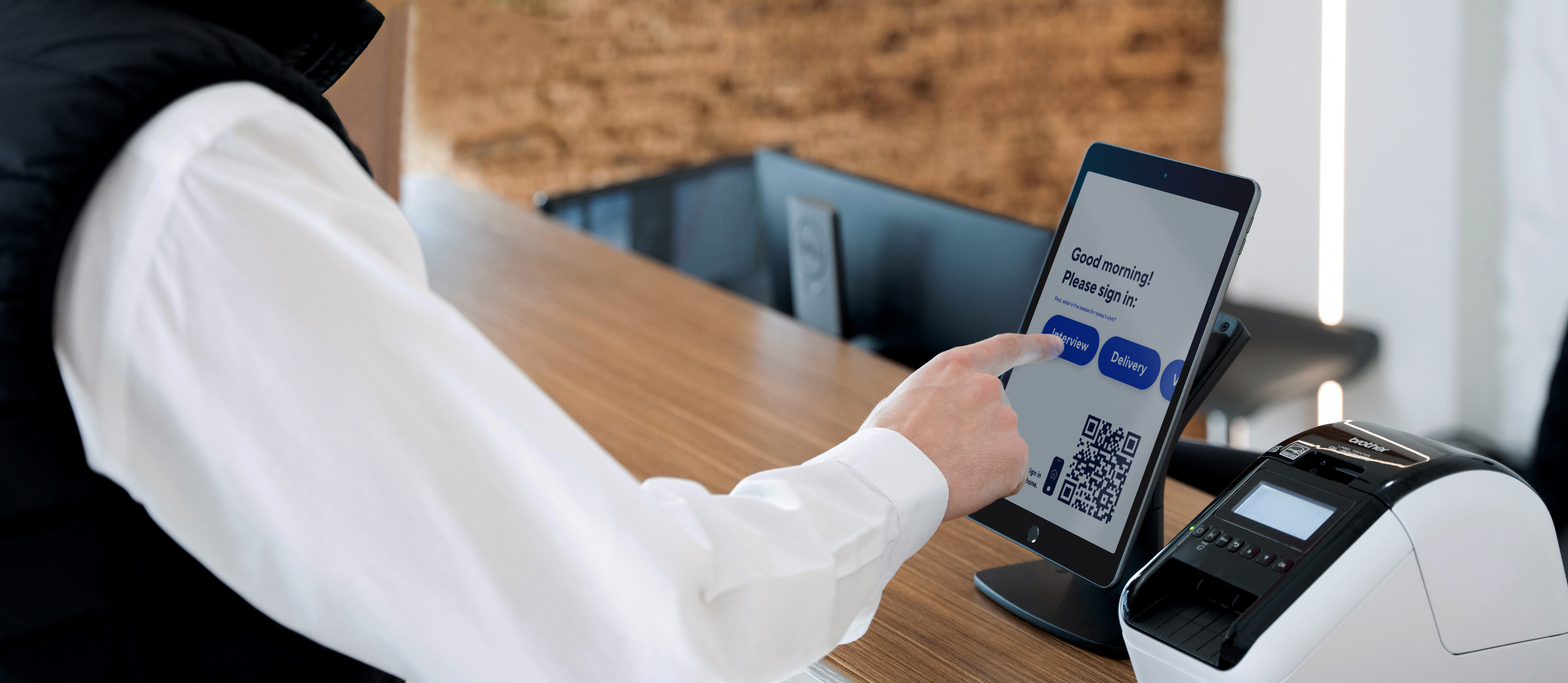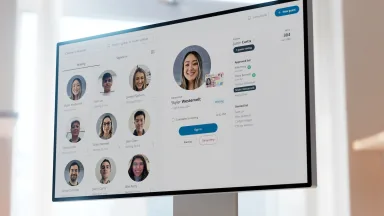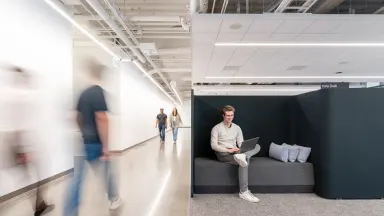What Every Workplace Visitor Policy Needs for Secure Guest Management
Republished on verkada.com with permission of Security Magazine. See the original article here.

As an employee, I’ve worked in buildings where building access control was the least of my concerns. The process of coming and going was straightforward and seemingly secure. On the other hand, I’ve worked in places where people seemed to come and go at will. At times, that free flow of people made me and my colleagues a bit uneasy.
The fact of the matter is that most businesses welcome visitors on a daily basis. To ensure safety and security across company facilities, those businesses need to have a comprehensive workplace visitor policy in place. In addition to maintaining a better visitor experience and compliance with rules and regulations, it should also ensure the protection of people, assets, and privacy.
As your organization builds out its visitor policy, here are some key considerations to keep in mind.
1. Establish a Chain of Command
A corporate office may grant different people the power to authorize a visitor’s admission. This varies based on the size of the company. The owner of a startup might directly greet a visitor, while most larger organizations have a receptionist sitting just past the first controlled access point.
Regardless, authorization to visit the premises should be granted by enabling host authentication. As part of your visitor policy, authentication rights should be explicitly given to select people within your organization. To maximize security, your visitor management software should allow for role-based and site-based permissions, with any actions made traceable through audit logs.
2. Create Custom Check-In Processes Based on Guest Type
To this day, paper logbooks are still commonplace as a way for guests to sign themselves in. However, they can easily become a privacy violation by allowing visitors to see the other people who have signed in. This can be of particular concern for healthcare organizations, who have strict privacy regulations (i.e., HIPAA) they must adhere to.
Frankly, signing a visitor badge is one of the best ways to approach the matter of identification. Yet many organizations use archaic, labor-intensive processes for issuing badges. Here’s how that process looks when it’s managed by visitor management software:
Visitor enters and approaches the check-in station
The system initiates a pre-configured check-in process based on guest type (interviewee, contractor, etc.)
Based on the companies’ configuration, visitor database, and preferences, access is granted/or denied
The system issues and prints a badge with all required information, including name, purpose, arrival/departure time, and who approved the entry
All of this information is stored in a secure, cloud-based system that ideally expunges visitor data after a set period of time.
3. Ensure Visitors are Approved, Escorted, and Easily Identified
For many businesses, restricting access and easily identifying who is in your building is part of ensuring the safety of those in it. Some areas require a ‘host’ to accompany the visitor at all times, while others — like school campuses — have even stricter policies based on sex offender status. Regardless, it’s important that your visitor management software helps ensure best practices, such as:
Requiring an employee ‘host’ to be instantly notified as part of the sign-in process
Photo badges that distinguish different guest types (e.g., blue for interviewers, green for contractors)
Deny lists to automatically deny entry and alert key individuals of attempted access
Security screens to compare personal identification to sex-offender registries
4. Integrate with Physical Security Software
Strong security solutions combine different products across your building operating system — cameras, access control, sensors, and alarms — so they work seamlessly together. Some companies get this half right: they implement visitor management but don’t tie it to their broader building ecosystem. The result is that the visitor management solution exists in its own silo and does little more than streamline the work of the receptionist.
Leveraging an integrated suite of products allows admins to manage guest logs, review video footage, and remotely unlock doors from one platform. Users can also designate cameras for live monitoring on the visitor log dashboard, control access through key areas by integrating with access control systems, and leverage cameras to view guest activity throughout the facility.
This creates continuity from entry to exit for all guests, increasing convenience while significantly heightening security.
5. Maintain a Complete Visitor Record
Each employer determines what type of screening process will be used for their worksite based on local, state, or industry requirements. For sensitive industries, completion of documents such as non-disclosure agreements (NDAs), health questionnaires, or security screens may be a prerequisite to entry.
By digitizing visitor management, maintaining a record of completeness is as simple as enabling cloud backup. With unlimited cloud archiving, organizations have a record of being in compliance, complete with check-in, check-out, signed documents, and more.
For example, the Occupational Safety and Health Administration (OSHA) requires some employers to screen individuals for COVID-19 symptoms before they enter the workplace. In the event of an audit, they can easily retrieve the information they need; searching through digital visitor logs is much faster than manually checking each page of a pen-and-paper logbook.
6. Be Intuitive and Easy to Follow
The reality is that your workplace visitor policy will be ignored if it’s difficult to follow, and the same is true for your visitor management software. The more complicated it is, the less likely it will be utilized.
To maximize compliance, look for visitor management software that is simple to set up, customize, and use. Removing friction from the process will help drive greater adoption and, consequently, greater security.
An integrated visitor management system also lightens front-desk workload by automating necessary aspects of the sign-in flow. Employees will no longer have to handwrite badges, keep track of signed agreements, or track down staff members when their guests arrive. Not only does this streamline workflow, but it also reduces the margin for human error.
Modern visitor management software also integrates with existing workplace tools and processes. Some solutions generate automated alerts to notify the host through SMS, email, or a third-party tool (e.g., Slack) when their visitor arrives.
The more you operationalize these routine tasks, the more efficient your organization becomes.
Last Word
As businesses increasingly adopt cloud-based visitor management systems, let’s not lose sight of the ultimate goal. We’re not just here to enforce visitor policies, as important as those are. The focus should be on solutions that create an environment where employees feel both secure and comfortable. Moving forward, the solutions that can deliver this seamless check-in-to-sign-out experience will lead the way.





